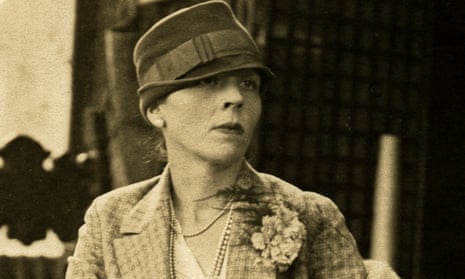“Do you know what a Tuppenny Upright might be?” asks Dr Matthew Mighty-grain-of-salt-Dante-O’Connor towards the end of Nightwood. He doesn’t wait for an answer: a Tuppenny’ Upright, we immediately learn (even if we don’t want to), is “an old-time girl” who plies her trade on London Bridge and gets her name because “for tuppence, an upright is all anyone can expect”. He plunges on:
“They used to walk along slowly, all ruffles and rags, with big terror hats on them, a pin struck over the eye and slap up through the crown, half their shadows on the ground and the other half crawling along the wall beside them; ladies of the haute sewer taking their last stroll, sauntering on their last Rotten Row, going slowly along in the dark, holding up their badgered flounces, or standing still, silent and as indifferent as the dead, as if they were little girls; their poor damned dresses hiked up and falling away over the rump, all gathers and braid, like a Crusader’s mount, with all the trappings gone sideways with misery.”
That’s a colossal, breathless, bursting sentence. OK, there aren’t any walls on London Bridge, but those half-crawling shadows are a striking vision. The concluding riff on the skirts “like a Crusader’s mount” is unexpected and tragic: a head-swirling whirl of disgust and religious imagery. And then there’s the “badgered flounces”, the “haute sewer”, the body horror, the death and degradation. Nightwood may divide opinions, but there’s no doubting that Djuna Barnes knew how to write about the darkness.
There is a kind of woozy glamour to the lives described in Nightwood, but they are mainly found in the shadows. Her characters occupy sleazy bars, “pissoirs” and “degraded” apartments where “abominations” lurk in swill pails. They are nocturnal, “full to the gorge with misery”, outcast and angry.
Rage is maybe the most prominent darkness in Nightwood. Barnes once told a friend that this novel was written in blood “while it was still running”. She never made any attempt to disguise that it was about her own failed relationship with artist Thelma Wood, who had left Barnes for translator Henriette Alice McCrea-Metcalf – who has her own place in the book as Jenny.
Jenny is the “squatter”, a thief of love and “one of the most unimportantly wicked women of her time” who “defiled the very meaning of personality”. The first five pages of chapter four are given to insults so hot I thought they might blister my eyes. Just look:
“One inevitably thought of her in the act of love emitting florid commedia dell’arte ejaculations; one should not have thought of her in the act of love at all.”
Nightwood may have its faults but at its bleak best, it is exhilarating. Towards the end of the book, Dr Michael calmly informs a barman: “To think is to be sick.” As if that aperçu isn’t enough, he goes on:
“If you really want to know how hard a prize-fighter hits, you have got to walk into the circle of his fury and be carried out by the heels, not by the count.”
So it is that Nightwood takes its readers into the circle of fury and smashes them to the canvas. It’s brutal, ugly and cruel – but no more so than the world it describes. It’s also tremendous.
Yet I should also admit to discomfort and abhorrence. There’s another darkness in Nightwood: racial essentialism. Barnes is forever drawing distinctions between “the Jew”, “the Christian”, “the Irishman”. With the wearying inevitability for a book published in 1936 by TS Eliot, Jews are especially singled out: Dr Matthew remarks that “the Jew and the Irish, the one moving upward and the other down, often meet, spade to spade, in the same acre … All right, Jews meddle and we lie, that’s the difference, the fine difference.” Elsewhere, Felix – who is half-Jewish, a fact Barnes labours over agonisingly – is said to be “racially incapable of abandon”.
Barnes’s views on Jewishness were complex; she has even been described as sympathetic. This story of outcasts reflects the history of persecution, written on the side, as Barnes would have it, of “the wandering Jew”. The literary theorist Kenneth Burke says that Nightwood was “as ‘innocent’ of political organisation as is childhood”, with some reservations. But that doesn’t alter the fact that Nightwood contains a lot of nonsensical guff about race and blood. Barnes may have shrugged off some of the conventions of her world, but in other ways, she was in thrall to the fashions of her day. It’s possible to argue that being so steeped in its own time makes Nightwood even more valuable as a historical document – but a book can be repellent at the same time as being brilliant.

Comments (…)
Sign in or create your Guardian account to join the discussion